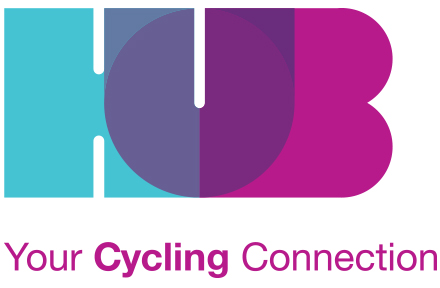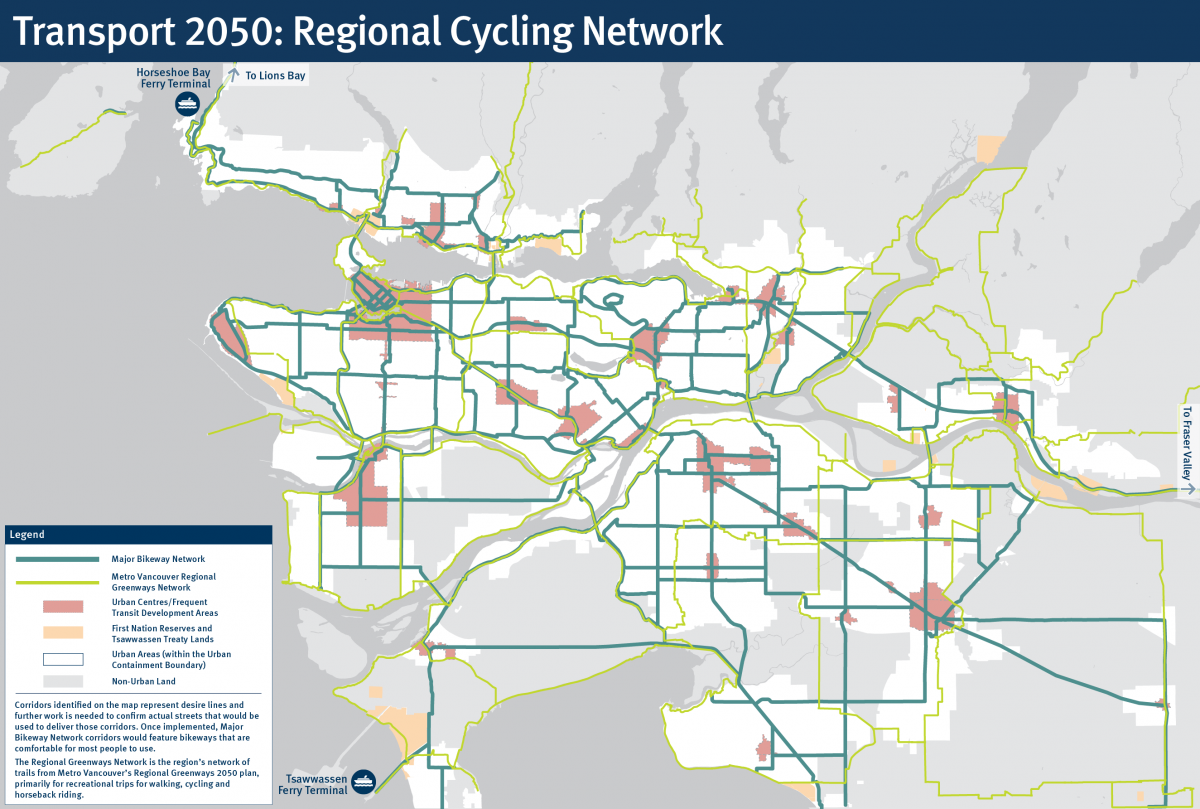Making the Case for Cycle Highways in Metro Vancouver
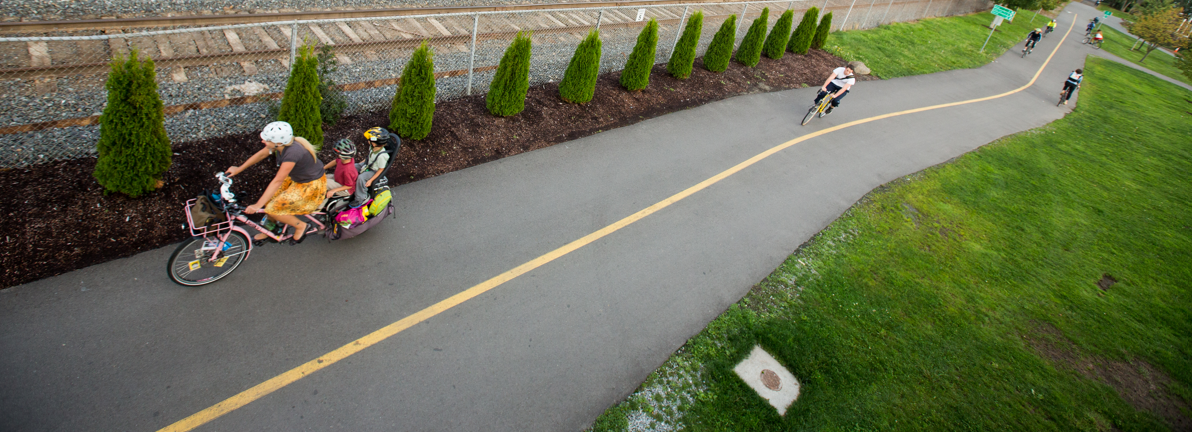
Photo credit: Cycle Superhighways, Capital Region of Denmark
Cycle Highways in Metro Vancouver
Long-distance, fast, comfortable cycle highways are common in Europe and have significant potential to address many pressing challenges locally in Metro Vancouver. This project draws on learnings from European and other jurisdictions that have successfully built cycle highway networks. Within the Metro Vancouver context, we illustrate the demand and benefits of cycle highways. Cycle highways would be a jump forward to #UnGapTheMap. Some existing routes that could potentially be upgraded to cycle highways are analyzed. This initial project serves to start a conversation in the region about the next steps to make cycle highways a reality.
Show your Support for a Cycle Highway Network

Download the Cycle Highways in Metro Vancouver Report
What are Cycle Highways?
Cycle highways are the highest quality bike routes, covering long distances (5km+) and providing regional connections between major destinations. They are direct, paved, protected, lit, of ample width, and with intersections prioritizing people cycling. This, along with clear signage, branding, and regular maintenance, ensures cycle highways are safe, comfortable, and easy to use for people of all ages and abilities at all times of the day and year.

Download the Cycle Highways in Metro Vancouver Report
Connection to Major Bikeway Network
The Major Bikeway Network (MBN) is a conceptual network of high-quality, regionally-significant cycling routes, connecting key destinations around Metro Vancouver. The TransLink MBN has been developed in consultation with key stakeholders in the region. Cycle highways are an example of what a developed MBN could look like, potentially functioning as a subset of the MBN.
“Cycle highways are gaining momentum across the world as a solution to address traffic congestion. Metro Vancouver has an opportunity to be one of the early adopters in North America. TransLink’s Major Bikeway Network (MBN) has already highlighted bike routes that connect urban and other centers as identified in the regional growth strategy. Cycle highways would be the perfect way to implement the MBN.”
- Shauna Sylvester
Professor of Professional Practice, SFU Faculty of Arts and Social Sciences,
Lead Facilitator of Moving in a Livable Region
Regional Context
The population in Metro Vancouver is expected to grow by another one million by 2050, while density continues to increase across the region. While we have made great progress in active transportation in recent years, the region is still very dependent on vehicles, with 70% of personal trips made by motor vehicles. Key regional goals including Transport 2050, Metro 2050, Climate 2050, and Clean BC recognize the need for more active and sustainable transportation options.
“Supporting a regional major bike network in Metro Vancouver is one of the bold moves called for in Transport 2050, and I am excited to see HUB Cycling putting their advocacy work towards building a regionally connected cycle highway network that would provide new transportation options for our region's residents.”
- Jonathan Cote
Mayor, City of New Westminster
Chair of the Mayors' Council

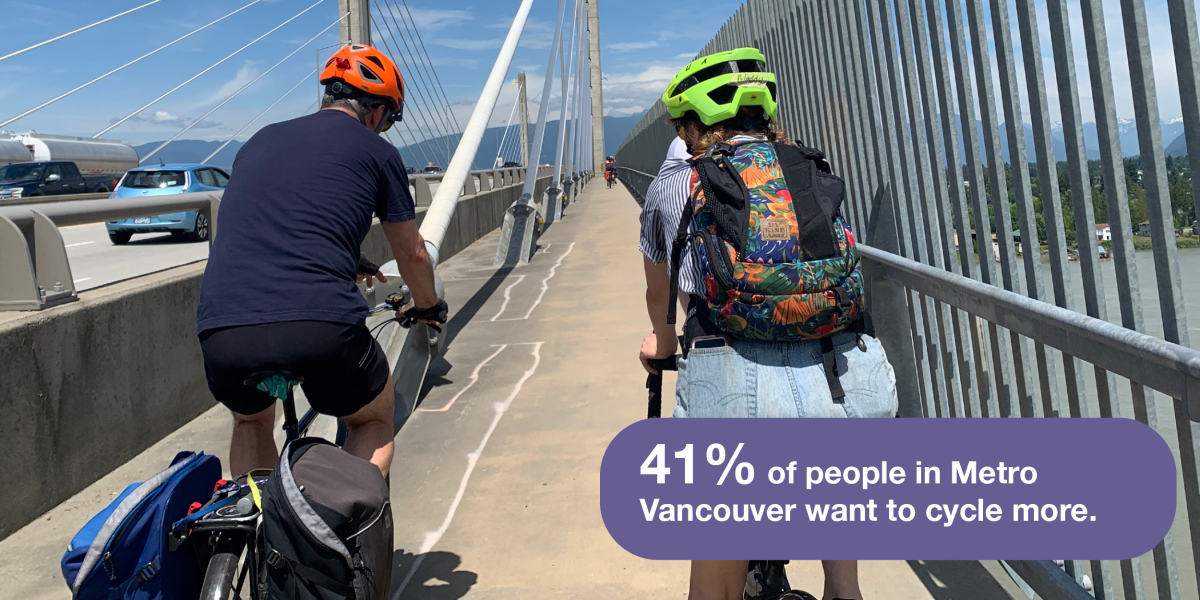
Demand
Nearly half of Metro Vancouverites (41%) want to cycle more, but the single biggest concern is unsafe and uncomfortable cycling facilities. A survey of over 500 participants of 2021 Go By Bike Week found 90% or more were in favour of cycle highways and would ride on one if we had it. There is significant demand for both better cycling infrastructure in general and cycle highways in particular.
In our Go by Bike Week post-event survey, we asked participants the following questions:
Do you support the building of cycle highways in Metro Vancouver?
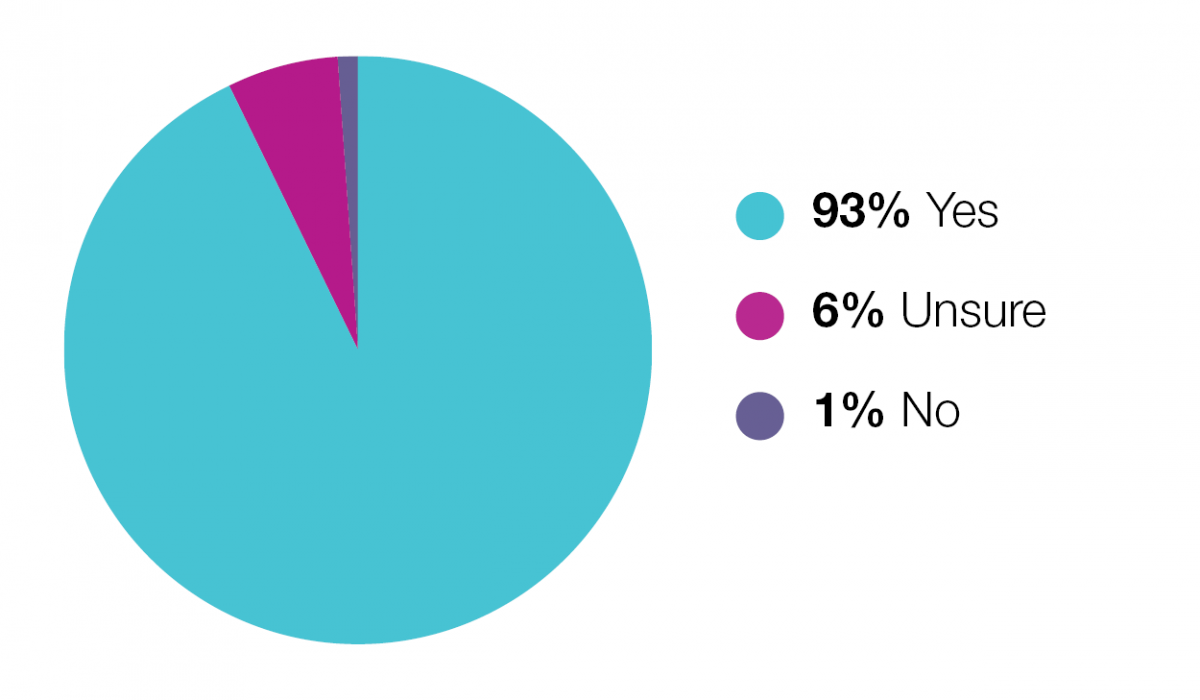
Would you use cycle highways if they were built in Metro Vancouver?
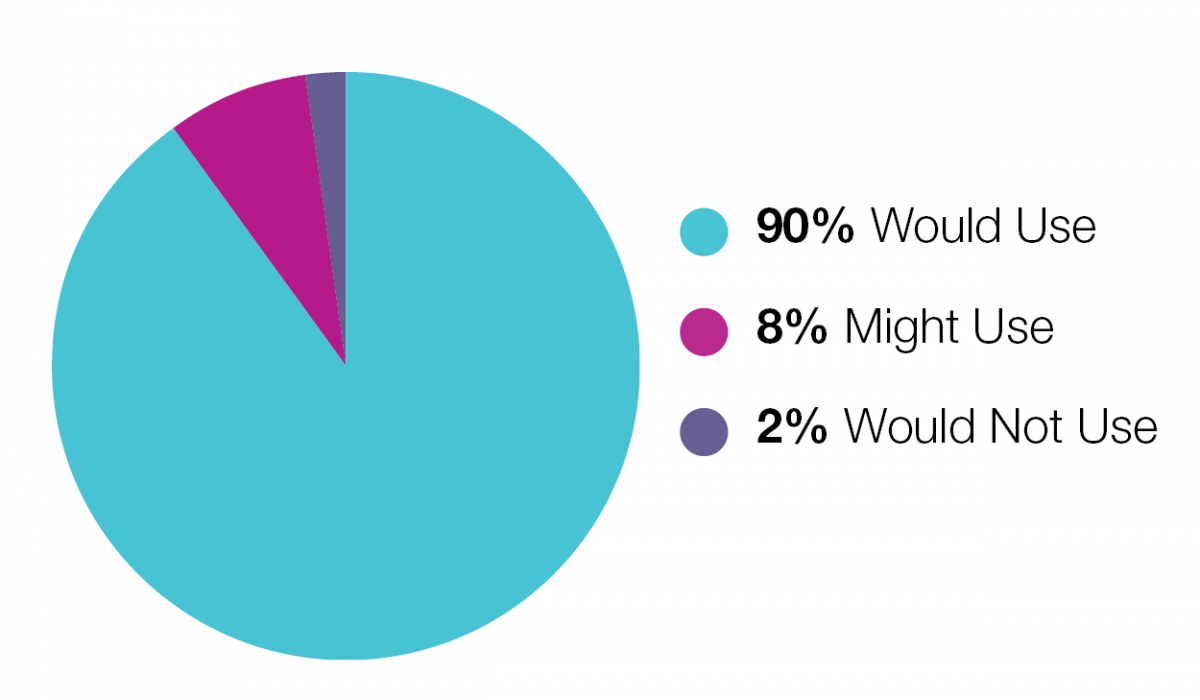
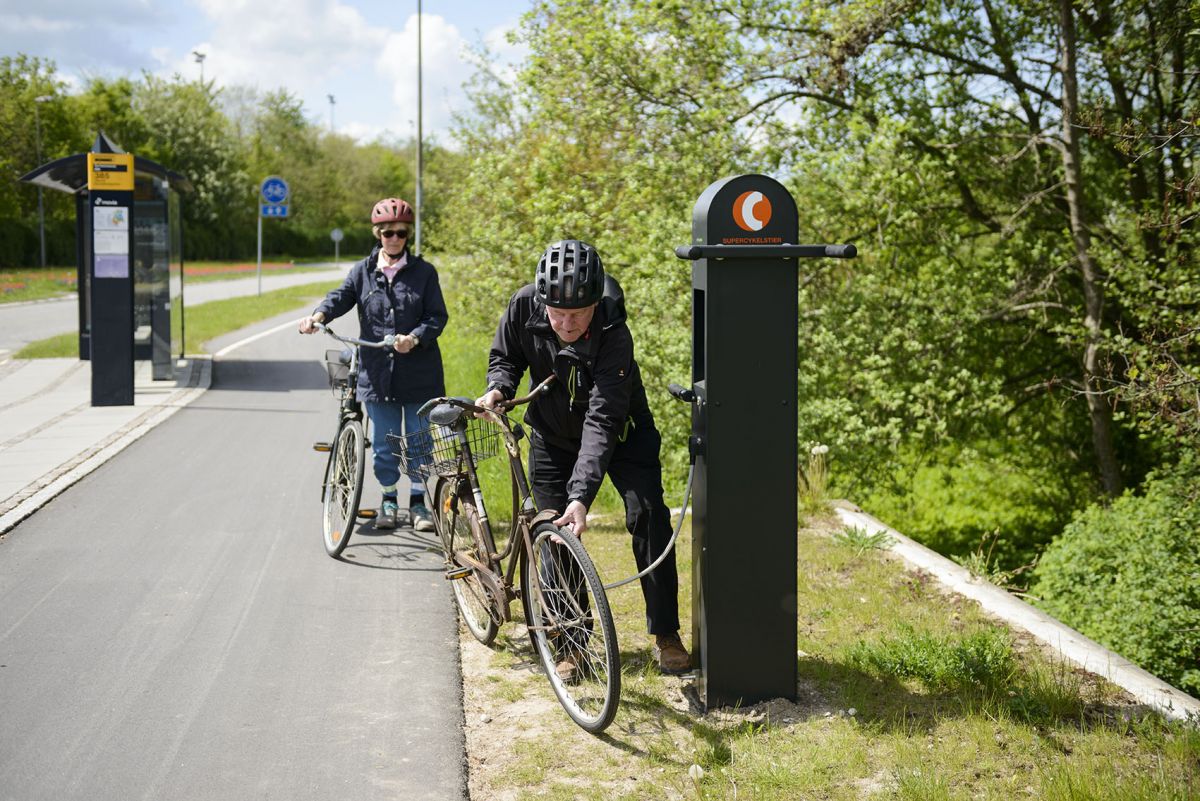
Benefits
Cycling has numerous benefits including improved physical, mental and social well-being.
Cycling helps reduce congestion and improve air quality. Cycling is a very affordable means of transportation, and building cycling infrastructure is relatively inexpensive. Economically, people biking spend money on local businesses, and cycle highways have an excellent return on investment. The rise of micro-mobility, including e-bikes, pairs perfectly with cycle highways. Cycle highways help attract cycle tourism, a booming industry.

Reduces Congestion - 3.8 million commute hours saved
 Improves Air Quality
Improves Air Quality

Improved Health

Affordable and relatively inexpensive to build cycling infrastructure

Excellent Return on Investment

Cycle Tourism - The value of Europe’s cycle tourism is $44 billion euros

Complements e-bikes
Photo on right credit: Cycle Superhighways, Capital Region of Denmark
“All residents of Metro Vancouver, not just people cycling, would benefit from a system of cycle highways. By encouraging cycling, especially for the commute to work, cycle highways help shift people from driving to cycling, thus reducing traffic congestion on the busiest roadways at the busiest times of the day. That shift from driving to cycling also helps reduce air pollution, noise, energy use, and greenhouse gases that worsen climate change.
Cycle highways in Metro Vancouver would provide a wide range of benefits not only for long-distance commuters but also for people cycling shorter distances among the various communities in the metropolitan area. Cycle highways would facilitate seamless connections among the various local bikeway networks and thus help knit together communities in the region.
Cycle highways would greatly improve cycling safety by providing wider, high-quality facilities separated from motor vehicle traffic, which is preferred by most people. These sorts of protected facilities have been shown by many studies to improve cycling safety and to increase cycling by vulnerable groups.”
- John Pucher
Professor Emeritus, Urban Planning and Policy Development Program
Edward J. Bloustein School of Planning and Public Policy, Rutgers University
Case Studies Findings

Photo credit: Cycle Superhighways, Capital Region of Denmark
We looked at the network planning, initial development, funding, key stakeholders, and route selection process for existing cycle highways in Europe, and related greenways in North America. Key learnings:
![]()
Equity & Affordability

Equity is a growing concern across Metro Vancouver. Many who live in more suburban communities for affordability reasons, are often reliant on a car and have fewer transportation options. Cycling is a very economical means of transportation, but you need the appropriate cycling infrastructure to get around safely and comfortably. Poor quality or missing bike infrastructure disproportionally impacts equity-deserving groups. We identified higher concentrations across social equity measures, such as lower income and education levels. We then added this to areas with either poor access to quality cycling facilities or transit or a vehicle.
One in three households in Metro Vancouver spends more than 70% of income on housing and transportation
Coming Soon: Equity Analysis of Metro Vancouver’s Cycling Network Report
Analysis
Drawing on key elements of cycle highways from the research, we identified six criteria. Cycle highways should connect major destinations (including key equity areas), be direct, have a minimal slope, be at least five kilometers long, and prioritize people cycling at intersections. If on the roadway, the road type and speed are also important.
![]()
Results
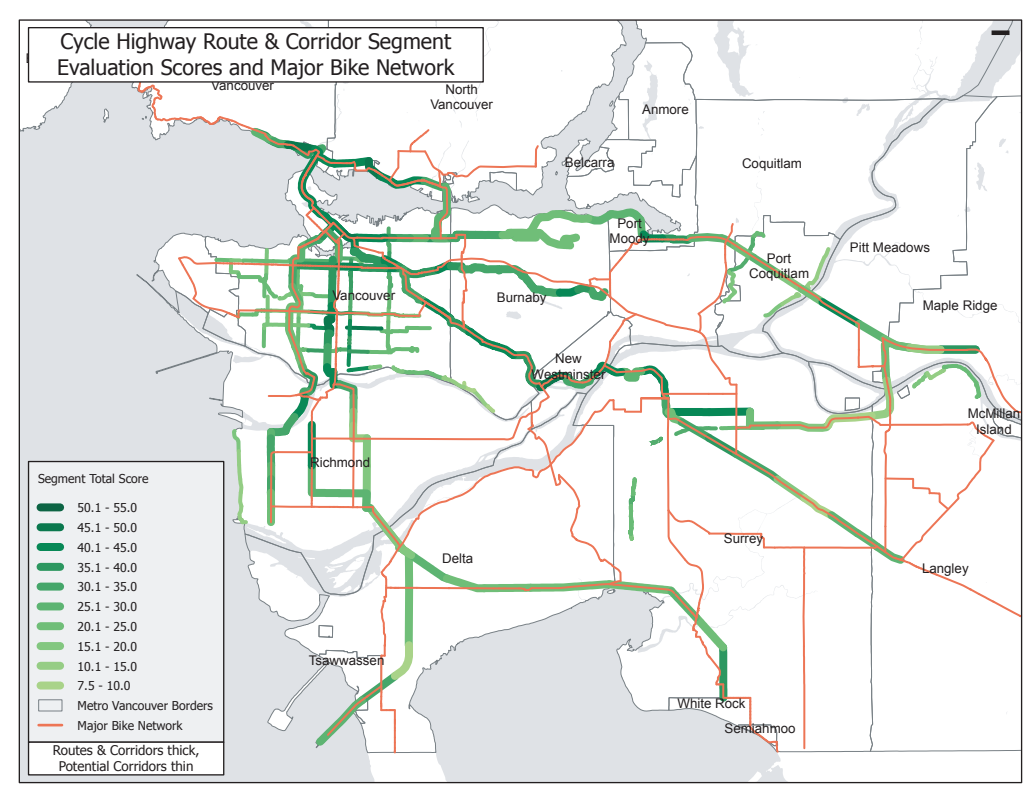
All of the routes we examined are potential routes for a cycle highway. The following scored higher using our identified criteria than others. These routes all included Vancouver, were existing high-quality cycle routes, had a number of destinations, and were relatively flat. Cycle routes in more suburban areas tend to score lower, due to fewer destinations, lower population density, etc, but these areas would stand to gain the most from a cycle highway.
Top Scoring Routes:
-
BC Parkway + Extension
-
Central Valley Greenway
-
Adanac & Francis Union + Extension
-
Tri-Cities to North Shore Corridor
Show your Support for a Cycle Highway Network

Download the Cycle Highways in Metro Vancouver Report
Next Steps

TransLink has already developed the concept of a Major Bikeway Network. Cycle highways are a potential way for these routes to look - safe, fast and convenient, modelled off the best learnings from Europe and elsewhere. With all the issues we are facing from inequality to congestion and climate crisis, cycling in general and cycle highways in particular, offer a quick and cost-effective way to move the region forward, and get more people cycling more often. The next step is a discussion with regional decision-makers considering the connection between cycle highways, the MBN, and Metro Vancouver’s Regional Greenways. Then let’s start building a network of cycle highways!
"It is such good news that HUB is promoting cycle highways to allow more people to ride throughout Metro Vancouver via safe routes. Research evidence shows that routes physically separated from motor vehicle traffic, lit at night, paved, and with gentle slopes are safer. And safe, connected routes are where everyone loves to ride."
- Kay Teschke
Professor Emeritus, School of Population and Public Health
The University of British Columbia
About the Team

Evan Hammer
Transportation Planner and Project Manager
Evan is the Infrastructure Planning and Policy Manager with HUB Cycling. He manages the #UnGapTheMap initiative, which includes the Infrastructure Challenge, Adopt-a-Gap, and Gap Priority Map projects. Evan engages with local, municipal, and provincial decision-makers and provides feedback on cycling projects and policy work such as Transport 2050 and Metro 2050. Evan holds a Master of Arts in Planning from UBC. His sustainable transportation experience includes cycling route selection, bike-sharing and transportation planning.

Giovanna Lanius-Pascuzzi
Researcher and Project Assistant
Giovanna completed work with HUB Cycling to research and make a case for the development of cycle highways across the Metro Vancouver region, which served as her thesis to complete her master's studies. During her studies in Bio-Inspired Innovation at Utrecht University, she further developed an environmentally focused, systemic perspective and interest in urbanism. By being based in the Netherlands, she directly realized the benefits of biking for transportation and the role infrastructure plays. Giovanna is passionate about sustainability within the urban environment; her interest in cycle infrastructure stems from the numerous systemic level benefits, such as through the environmental and health, that are realized by fostering cycling as a transportation mode.

Cody Gerow
GIS Consultant and Statistical Analyst
Cody is a multi-disciplinarian urban planner with a background in transportation and GIS. Cody has a Bachelors in Human Geography from the University of Alberta and a Masters in Sustainable Urban Planning from HafenCity Universität in Hamburg, Germany. After gaining professional experience in Germany, Denmark, and Sweden, Cody moved back to Canada to work for Vancouver Bike Share and the City of Vancouver, focusing on sustainable transportation planning. Cody now provides international GIS consulting and is based in Austria.
Acknowledgments
The project was overseen by the Cycle Highway Working Group. Thanks to Alex Taciuk, Erin O’Melinn, Gavin Davidson, Geneviève Bowers, Lisa Josephson, Navdeep Chhina, and Paul Kennedy for all their insight, guidance, and feedback.
Special thanks to David Ronnov with the Office of Cycle Highways in Copenhagen for providing initial feedback and direction in the early stages of the project, and sharing key learnings from the Danish experience developing cycle highways.
For the full list of acknowledgments, see the Acknowledgements section in the report Appendix.
How you can help?
If possible, consider making a donation to HUB Cycling and support our advocacy work in expanding the cycling network across the region.
Your support enables us to make an impact on people of all ages and abilities, promote access to cycling across regional and diverse communities.
What is the Impact of Your Generous Gift?
- $2,500 will help us develop programs for communities that may face social, cultural, and/or financial barriers to cycling.
- $250 helps us provide infrastructure research support needed for an advocacy project like cycle highways phase 2 analysis.
- $100 will help HUB organize online learning to encourage people of all ages and abilities to bike like our Biking for Mental Health webinar.
